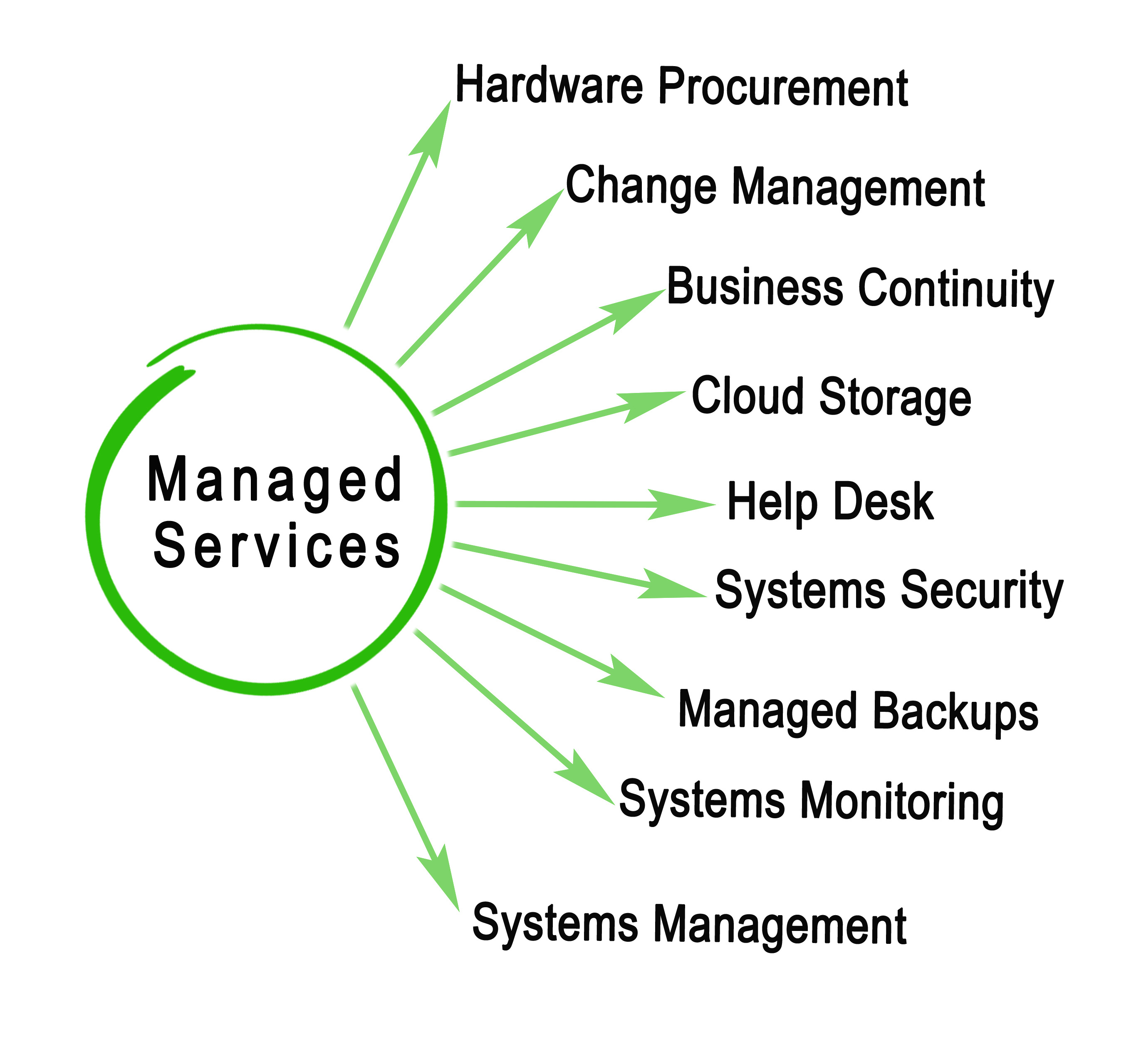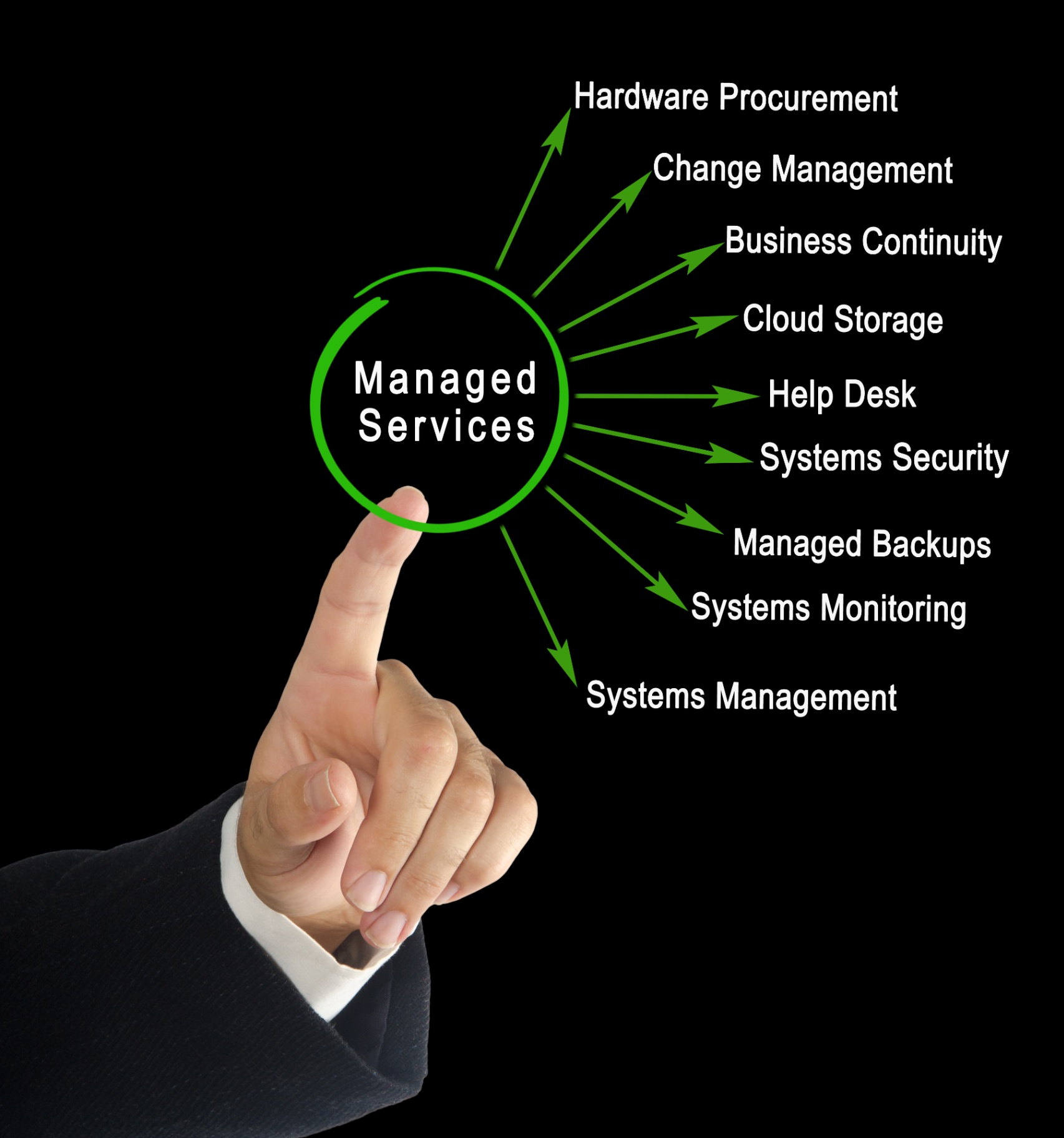You're sitting in your nonprofit's board meeting, staring at the IT budget line item that keeps growing every quarter. The cybersecurity insurance premiums just doubled after that ransomware attack hit three nonprofits in your county. Your volunteer coordinator can't access donor files because the server crashed again. And somehow, you're spending more on technology than ever while feeling less secure.
Sound familiar? You're not alone. Recent studies show that 60% of Connecticut nonprofits face cyberattacks annually, with 25% experiencing costly data breaches that average over $200,000 in damages: enough to shut down most charitable organizations permanently. Yet the same research reveals a surprising opportunity: nonprofits implementing strategic managed IT services typically reduce their technology costs by 35-50% while dramatically improving security postures.
The secret isn't spending more money on technology. It's spending smarter.
The Hidden Cost Crisis Crushing Connecticut Nonprofits
Before diving into solutions, let's examine why nonprofit IT costs spiral out of control. Most organizations approach technology reactively: buying software when volunteers complain, upgrading hardware when it breaks, and adding security tools after experiencing their first breach. This patchwork approach creates what IT professionals call "technology debt."
Consider the Connecticut Literacy Foundation (name changed for privacy), a mid-size nonprofit that came to us spending $15,000 annually on various IT services. They had separate vendors for email hosting, website maintenance, data backup, antivirus software, and technical support. Each vendor charged separately, none of them communicated with each other, and critical gaps existed between their services.
After implementing integrated managed services, their annual IT costs dropped to $8,500 while adding comprehensive cybersecurity monitoring, automatic software updates, and 24/7 technical support. More importantly, they've experienced zero security incidents in two years: a stark contrast to the three malware infections and one data breach they suffered previously.

1. Consolidate Your Technology Stack with Integrated Managed Services
The first step toward affordable managed IT services Connecticut nonprofits can implement is consolidating multiple vendors under one comprehensive provider. Most nonprofits unknowingly pay premium prices for basic services by working with separate companies for different technology needs.
A strategic managed services provider offers integrated solutions that work together seamlessly. Instead of paying separate monthly fees for email hosting ($50), website maintenance ($200), data backup ($150), security monitoring ($300), and technical support ($400), you might pay a single provider $650 for all these services plus advanced features you couldn't afford individually.
The key is finding providers who specialize in nonprofit technology challenges. Generic IT companies often lack understanding of tight budgets, volunteer management systems, donor databases, and compliance requirements unique to charitable organizations.
Smart Paws Tip: Look for managed service providers that offer nonprofit-specific pricing tiers and understand the unique workflow challenges faced by charitable organizations.
2. Leverage Microsoft 365 and Google Workspace Hidden Security Features
Here's a shocking statistic: 85% of nonprofits using Microsoft 365 or Google Workspace have activated less than 30% of included security features. These platforms include powerful tools that organizations already pay for but rarely utilize effectively.
Microsoft 365 Business Premium includes multi-factor authentication, advanced threat protection, data loss prevention, and mobile device management: features that would cost $200-400 monthly if purchased separately. Google Workspace offers similar capabilities through Gmail's advanced phishing protection, Drive's access controls, and Chrome's enterprise security management.
The Valley Community Center transformed their security posture by simply activating existing Microsoft 365 features. Previously, they spent $350 monthly on third-party email security, mobile device management, and file sharing solutions. After proper configuration of included tools, they eliminated these separate costs while achieving better protection against phishing attacks and unauthorized data access.
Implementation Strategy: Conduct a comprehensive audit of your current software subscriptions to identify built-in features that could replace paid third-party solutions.
3. Implement Smart Automation to Reduce Labor-Intensive IT Tasks
One of the biggest hidden costs in nonprofit technology is staff time spent on routine IT maintenance. When your program coordinator spends two hours weekly troubleshooting printer issues or your executive director manually backs up files each Friday, you're paying professional salaries for tasks that should be automated.
Modern managed services include automated patch management, security updates, system monitoring, and backup verification. These systems work 24/7 without human intervention, catching problems before they impact operations and maintaining optimal performance without staff involvement.
Consider automated solutions for:
- Software updates and security patches
- Data backup and recovery testing
- Network performance monitoring
- User account management and access control
- System health reporting and maintenance
The Fairfield Arts Alliance calculated that automation saved them 12 hours weekly of staff time previously spent on IT maintenance: equivalent to $15,600 annually in recovered productivity at their average staff wage.

4. Access Enterprise-Grade Cybersecurity Through Shared Security Operations Centers
Individual nonprofits cannot afford dedicated cybersecurity analysts, but managed service providers operate shared Security Operations Centers (SOCs) that monitor hundreds of clients simultaneously. This shared model provides enterprise-level protection at a fraction of individual costs.
A typical SOC monitors network traffic 24/7, analyzes threats in real-time, and responds to incidents within minutes. For a single nonprofit to achieve similar capabilities would require hiring multiple cybersecurity professionals at salaries exceeding $400,000 annually. Through managed services, organizations access this expertise for $200-500 monthly.
Advanced SOC services include:
- Real-time threat detection and response
- Incident investigation and remediation
- Compliance reporting and documentation
- Security awareness training for staff
- Regular penetration testing and vulnerability assessments
Case Study: After experiencing a ransomware attack that cost $45,000 in recovery fees, the Hartford Community Foundation invested in managed SOC services. Two years later, they've blocked over 2,400 malicious emails and prevented 17 attempted network intrusions: while spending less annually on cybersecurity than they paid for that single incident recovery.
5. Optimize Cloud Infrastructure Costs Through Right-Sizing and Resource Management
Many nonprofits overpay for cloud services by purchasing more storage, computing power, or software licenses than they actually need. Cloud cost optimization can reduce monthly expenses by 30-60% without impacting functionality.
Common areas for optimization include:
- Right-sizing server instances based on actual usage patterns
- Implementing automated scaling to match demand fluctuations
- Eliminating duplicate or unused software licenses
- Negotiating volume discounts through managed service provider partnerships
- Optimizing data storage tiers based on access frequency
The New Haven Youth Services organization reduced their monthly cloud costs from $1,200 to $450 by working with a managed provider to analyze usage patterns and eliminate waste. They maintained full functionality while redirecting $9,000 annually toward program funding.
6. Negotiate Nonprofit Pricing and Volume Discounts
Technology vendors offer significant nonprofit discounts that many organizations never request. Microsoft provides up to 75% discounts on software licensing. Adobe offers Creative Cloud at reduced rates for charitable organizations. Cisco provides networking equipment discounts through their corporate social responsibility programs.
However, navigating these programs individually consumes substantial time and often requires technical expertise most nonprofits lack. Best IT companies in Connecticut often maintain relationships with multiple vendors and can secure group pricing across their client base.
Volume purchasing through managed service providers typically provides:
- Software licensing at enterprise rates regardless of organization size
- Hardware procurement at wholesale prices
- Priority support and extended warranties
- Simplified billing and license management
- Regular price reviews and cost optimization recommendations
Smart Paws Success Story: A managed service provider helped five Connecticut nonprofits form a purchasing consortium, reducing individual software costs by 40% while providing access to enterprise features previously unaffordable for smaller organizations.
7. Implement Proactive Maintenance to Prevent Expensive Emergency Repairs
Emergency IT repairs cost 3-5 times more than preventive maintenance. When your server crashes during a fundraising campaign or your network fails during a board meeting, you're forced to pay premium rates for immediate resolution.
Proactive managed services monitor system health continuously, identifying potential failures before they occur. Regular maintenance schedules ensure optimal performance and extend equipment lifespan significantly.
Preventive maintenance programs typically include:
- Regular system health assessments and optimization
- Predictive failure analysis and component replacement
- Performance tuning and resource optimization
- Security vulnerability identification and patching
- Capacity planning and upgrade recommendations
The Stamford Educational Foundation avoided a $12,000 server replacement by implementing proactive monitoring that detected hard drive degradation three months before failure. The planned replacement during normal business hours cost $3,500: a $8,500 savings plus avoided downtime during critical operations.

8. Leverage Business Continuity Planning to Minimize Disaster-Related Costs
Natural disasters, cyberattacks, and equipment failures can devastate nonprofits lacking proper business continuity IT services CT. The average cost of IT-related downtime for small nonprofits exceeds $8,000 per hour when considering lost productivity, emergency recovery fees, and potential compliance violations.
Comprehensive business continuity planning includes:
- Automated offsite data backup with rapid recovery capabilities
- Alternative communication systems for emergencies
- Remote access solutions for staff working from home
- Incident response procedures and contact protocols
- Regular disaster recovery testing and plan updates
Strategic managed service providers offer business continuity as an integrated service rather than an expensive add-on. This approach typically costs 60-80% less than implementing disaster recovery independently while providing superior protection.
Real-World Impact: When flooding damaged the Waterbury Community Services building, their managed IT provider had them operational from temporary locations within 4 hours. Without proper business continuity planning, similar incidents have forced nonprofits to cease operations for weeks while rebuilding technology infrastructure.
9. Optimize Network Infrastructure Through Professional Design and Management
Poor network design creates ongoing performance issues that drain productivity and increase support costs. Slow file transfers, dropped video calls, and intermittent internet connectivity frustrate staff and volunteers while requiring expensive troubleshooting.
Professional network design and management services provide:
- Optimized wireless coverage throughout facilities
- Proper network segmentation for security and performance
- Quality of Service (QoS) configuration for critical applications
- Regular performance monitoring and optimization
- Proactive capacity planning for organizational growth
Modern network infrastructure supports voice over IP (VoIP) telephone systems, cloud applications, and mobile device connectivity while maintaining security and reliability. Proper design eliminates the need for expensive network troubleshooting and frequent equipment replacements.
10. Access Specialized IT Support for Nonprofit Organizations Connecticut
Generic technical support often fails to understand nonprofit-specific challenges like donor management systems, volunteer coordination platforms, and compliance requirements. IT support for nonprofit organizations Connecticut specialists provide targeted expertise that resolves issues faster and prevents recurring problems.
Specialized nonprofit IT support includes:
- Deep knowledge of fundraising and donor management software
- Understanding of compliance requirements for different nonprofit types
- Experience with volunteer management and coordination systems
- Familiarity with grant reporting and documentation requirements
- Expertise in budget-conscious technology planning and implementation
The Connecticut Coalition for Children partnered with a nonprofit-focused IT provider and reduced their average technical support resolution time from 3.5 days to 4 hours. This improvement eliminated the productivity losses that previously occurred when systems remained down for extended periods.

How FoxPowerIT Makes Strategic IT Management Accessible for Connecticut Nonprofits
At FoxPowerIT, we understand that every dollar counts in the nonprofit sector. Our Smart Paws approach focuses on maximizing technology value while minimizing costs through strategic partnerships and integrated service delivery.
Our nonprofit-focused managed services include:
Comprehensive Security Operations: 24/7 monitoring through our Security Operations Center, protecting against the cyber threats that have devastated other Connecticut nonprofits. We've prevented over 15,000 malicious attacks across our nonprofit clients in the past year alone.
Integrated Technology Stack: Instead of managing multiple vendors, our clients work with a single team that understands their complete technology environment. This integration typically reduces costs by 35-45% while improving system reliability and security.
Proactive Maintenance and Support: Our monitoring systems identify potential issues before they impact operations, and our local Connecticut technicians provide rapid response when problems occur. Clients report 90% fewer emergency IT incidents after implementing our managed services.
Nonprofit-Specific Expertise: We specialize in the technology challenges unique to charitable organizations, from donor database security to volunteer access management. Our team has helped Connecticut nonprofits navigate complex compliance requirements while maintaining tight budgets.
Transparent, Predictable Pricing: Our monthly service plans eliminate surprise IT expenses and provide budget predictability essential for nonprofit financial planning. Most clients save 35-50% annually compared to their previous technology costs.
The Path Forward: Strategic Technology Partnership
The most successful Connecticut nonprofits treat technology as a strategic enabler rather than a necessary expense. By partnering with experienced managed service providers who understand nonprofit challenges, organizations can achieve enterprise-level capabilities while maintaining essential budget discipline.
Remember the Connecticut Literacy Foundation mentioned earlier? Two years after implementing strategic managed services, they've redirected $6,500 annually from IT costs to direct program funding: enough to provide literacy services for 130 additional community members.
The key is choosing partners who understand that nonprofit technology decisions impact communities, not just bottom lines. When your IT infrastructure works reliably and securely, your team can focus on the mission-critical work that makes a difference in people's lives.
Ready to transform your nonprofit's technology approach? Contact FoxPowerIT today for a complimentary technology assessment. We'll analyze your current IT costs and identify specific opportunities for savings while improving security and reliability. Our Smart Paws team specializes in helping Connecticut nonprofits maximize their technology investments without compromising their missions.
Visit https://foxpowerit.com to learn more about our nonprofit-focused managed IT services, or call us to discuss how strategic technology partnerships can transform your organization's operational efficiency and security posture.
The choice is clear: continue struggling with escalating IT costs and security vulnerabilities, or partner with experts who understand how to make technology work for nonprofit missions rather than against nonprofit budgets. Your community depends on your organization's success: make sure your technology supports that mission rather than hindering it.

